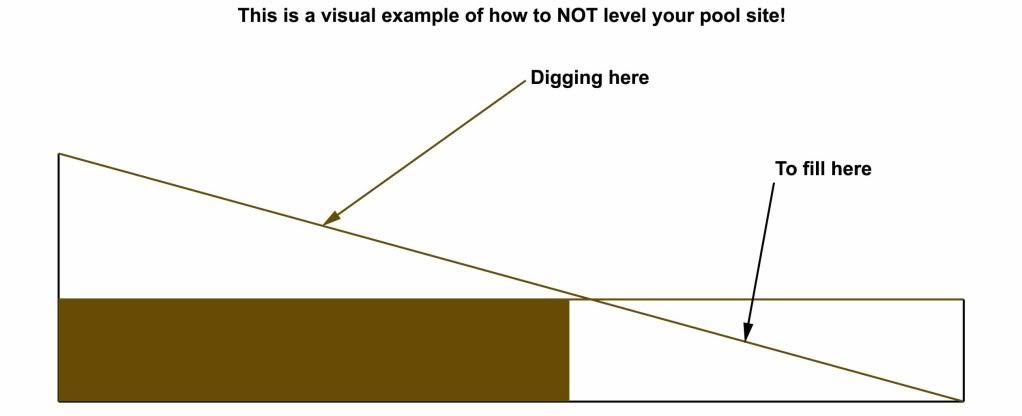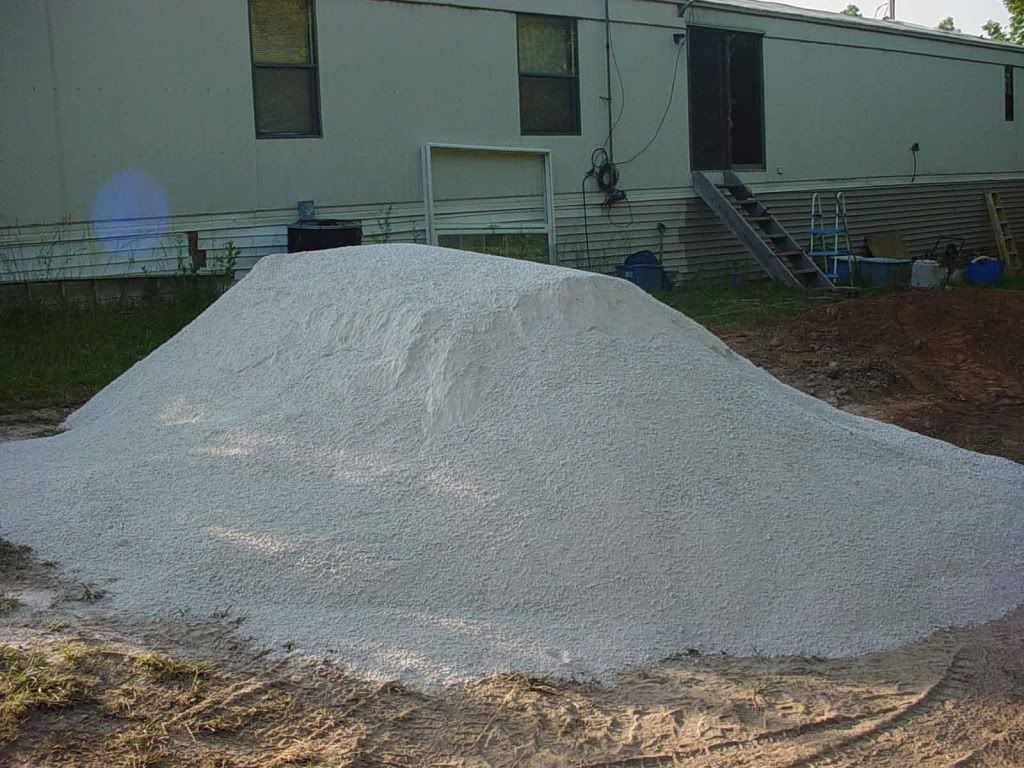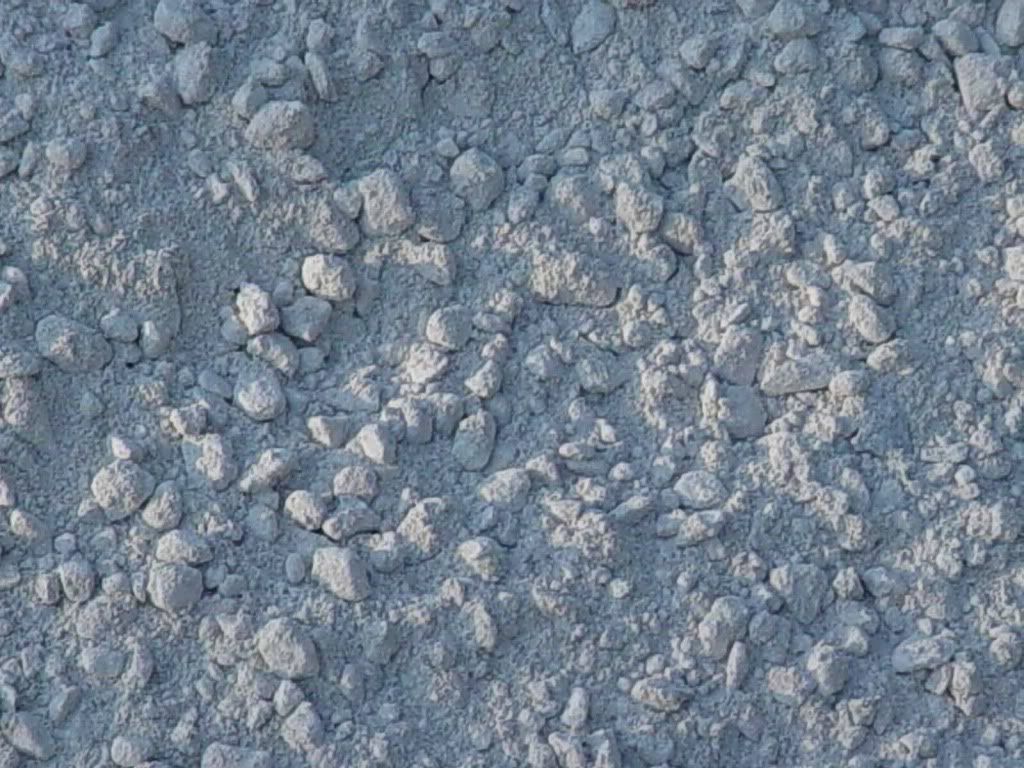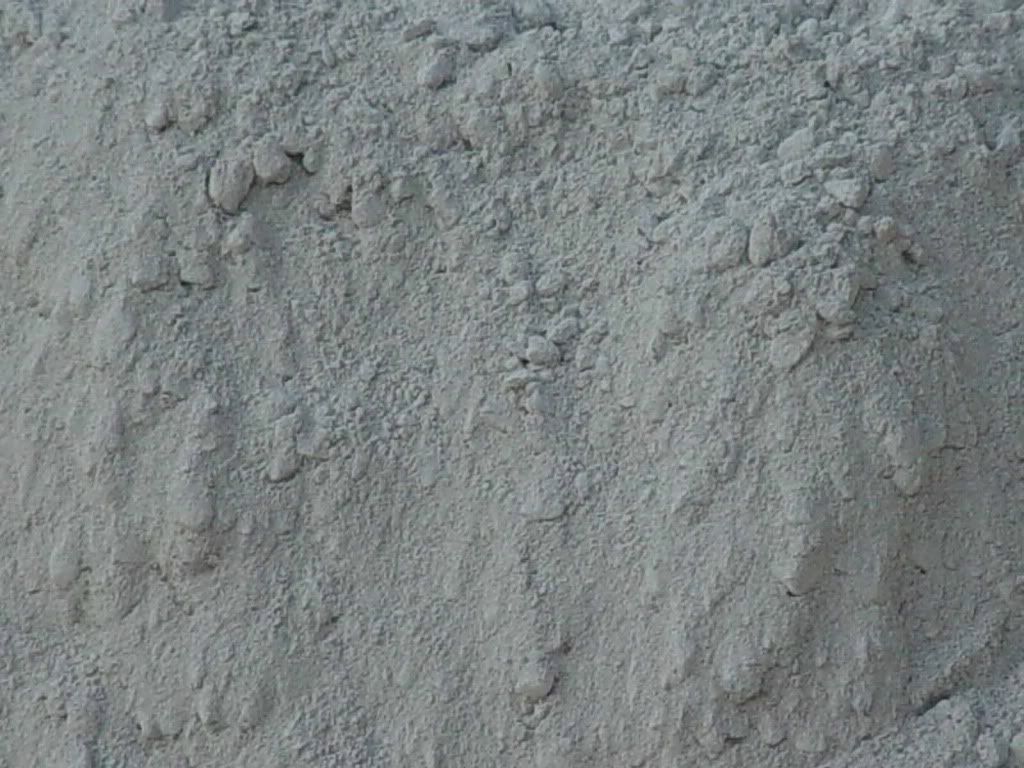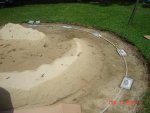Hey Everyone,
After spending some time here at TFP I have noticed lots of posts about properly installing an Above Ground Pool, so I thought I would make a simple drawing of how it is done and post it here.
This could have gone in the "Under Construction" section but since it pertains to AG pools only I figured this would be the best place for it.
If anyone has any additional information to add please post or if you see something about the drawing that should be changed please let me know and I will make the changes needed.
Please Note: This is just a simple basic drawing, (Guide), hopefully it will help answer any questions you may have and give you a visual idea of how it should go.
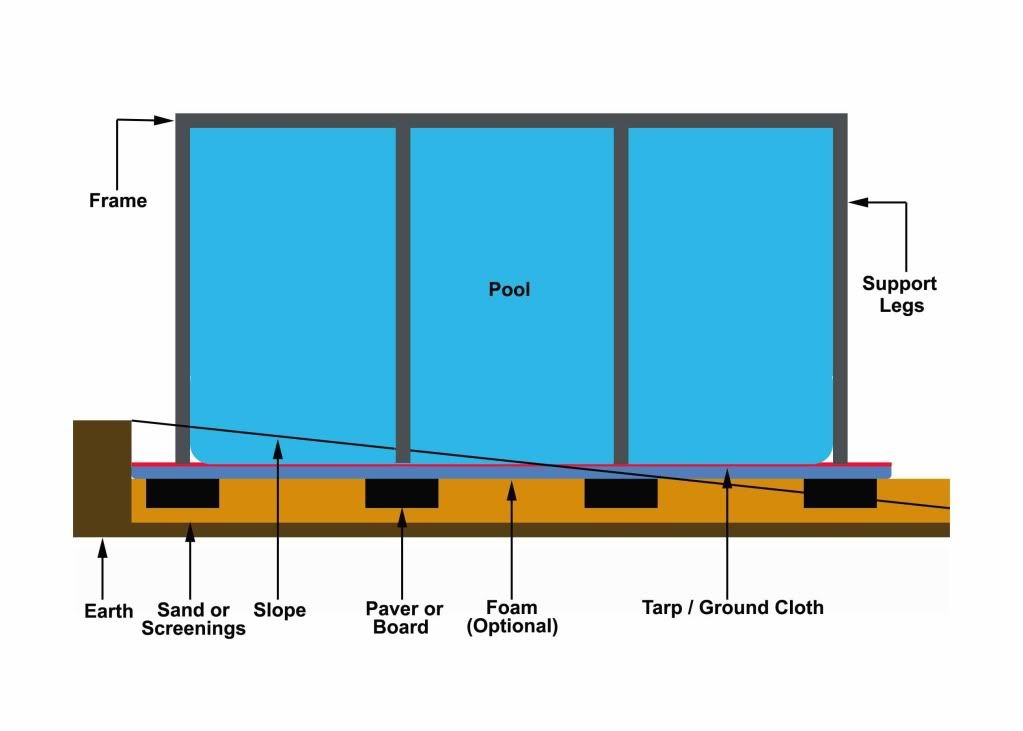
Sand under the Pavers or boards should be kept to a minimum to avoid settling.
If you will have to have something delivered, I recommend using screenings from a local quarry instead of sand, it will pack much better than sand, and once wet and packed it will be very hard, it is usually much cheaper than sand, however it WILL wash out in a heavy rain or lots of heavy running water if you don't put a border all the way around to hold it in place, but it will not wash out as easy as sand does, (putting a border around sand will do allot to keep it from washing out also).
IMO you should use 4" thick 8" x 16" concrete pavers, (they are thick enough and have a big enough footprint to help avoid settling), however some folks have had success using boards, and other sizes of concrete pavers.
Foam is optional but if you use sand it will prevent the sand from shifting when you walk around in the pool causing low spots where it will be hard to clean, if using the screenings, then it makes for a nice soft bottom to walk on, plus it puts something between the bottom of the pool and the small rocks in the screenings, (Note: The rocks in screenings are very small and usually rounded with few if any sharp edges).
If you use foam you should tape the joints between each piece to avoid them moving around while setting up and filling, this will prevent a gap that your pool bottom will sink into, again causing spots hard to clean.
Some folks here highly recommend using both a heavy tarp and the ground cloth that comes with your pool.
In the drawing I have the support legs sitting on top of the foam, personally I suggest cutting the foam so that it sits down level with the top of the pavers, thus the supports will sit directly on the pavers, (whatever thickness of foam you use there is a chance it could compact and cause some settling).
The most important thing you should work on is getting your site and pavers LEVEL LEVEL LEVEL, the more level it is before it is filled the fewer chances you will end up having problems with it down the road, the last thing you want is to drain and relevel, or worse have your pool become unstable and possibly blow out, this can be very expensive, and DANGEROUS.
Hopefully someone will post pics of how to use a long board to level the site!
Drainage is VERY IMPORTANT, AVOID Standing Water around your pool, make sure you allow for any water that might splash out, or flow from overfilling either on accident or from a heavy rain, the longer water sits around the base of your pool the softer the earth will become and even with a properly leveled pool and good pavers it is possible for your pool to settle and become unstable.
Note: This drawing depicts digging down to level your site, it is the preferred method, raising the low side is possible, but it requires some heavy equipment and alot more time and effort to get it compacted so you are not at risk of your pool settling.
I have calculated that a 52" deep pool will have 1.53 PSI on the pool bottom when installed on a level surface, I haven't figured out how to calculate the PSI on the support legs though, if a pool is not level everything changes and you WILL put EXTREME pressure on some parts of the pool frame that is was NOT intended to support.
Once you have your site level, and your pavers all set and level have the pool all setup with the supports centered on the pavers and start filling, constantly walk around the pool and make any adjustments needed to keep the supports centered on the pavers, (they tend to scoot out as the pool fills).
Also, make sure you don't get in a big rush while putting the pool together, if your pool has the center strap with loops for the supports to go thru make sure you don't miss any!
ALWAYS THINK SAFETY FIRST!
I have started this thread as a basic guide only, by no means is anything here set in stone, everyone has their own ideas of what is acceptable and what isn't.
Hopefully those with experience will contribute what they know and have learned so that this thread becomes a solid useful tool for the beginners.
Please if you find something I have written here that is not correct or seriously needs to be changed, send me a PM and let me know what I need to alter, I don't claim to be an expert so I will not take offense if you think something should be changed or re-worded ect., (let's not argue or debate anything in the thread, this is supposed to help people).
After spending some time here at TFP I have noticed lots of posts about properly installing an Above Ground Pool, so I thought I would make a simple drawing of how it is done and post it here.
This could have gone in the "Under Construction" section but since it pertains to AG pools only I figured this would be the best place for it.
If anyone has any additional information to add please post or if you see something about the drawing that should be changed please let me know and I will make the changes needed.
Please Note: This is just a simple basic drawing, (Guide), hopefully it will help answer any questions you may have and give you a visual idea of how it should go.

Sand under the Pavers or boards should be kept to a minimum to avoid settling.
If you will have to have something delivered, I recommend using screenings from a local quarry instead of sand, it will pack much better than sand, and once wet and packed it will be very hard, it is usually much cheaper than sand, however it WILL wash out in a heavy rain or lots of heavy running water if you don't put a border all the way around to hold it in place, but it will not wash out as easy as sand does, (putting a border around sand will do allot to keep it from washing out also).
IMO you should use 4" thick 8" x 16" concrete pavers, (they are thick enough and have a big enough footprint to help avoid settling), however some folks have had success using boards, and other sizes of concrete pavers.
Foam is optional but if you use sand it will prevent the sand from shifting when you walk around in the pool causing low spots where it will be hard to clean, if using the screenings, then it makes for a nice soft bottom to walk on, plus it puts something between the bottom of the pool and the small rocks in the screenings, (Note: The rocks in screenings are very small and usually rounded with few if any sharp edges).
If you use foam you should tape the joints between each piece to avoid them moving around while setting up and filling, this will prevent a gap that your pool bottom will sink into, again causing spots hard to clean.
Some folks here highly recommend using both a heavy tarp and the ground cloth that comes with your pool.
In the drawing I have the support legs sitting on top of the foam, personally I suggest cutting the foam so that it sits down level with the top of the pavers, thus the supports will sit directly on the pavers, (whatever thickness of foam you use there is a chance it could compact and cause some settling).
The most important thing you should work on is getting your site and pavers LEVEL LEVEL LEVEL, the more level it is before it is filled the fewer chances you will end up having problems with it down the road, the last thing you want is to drain and relevel, or worse have your pool become unstable and possibly blow out, this can be very expensive, and DANGEROUS.
Hopefully someone will post pics of how to use a long board to level the site!
Drainage is VERY IMPORTANT, AVOID Standing Water around your pool, make sure you allow for any water that might splash out, or flow from overfilling either on accident or from a heavy rain, the longer water sits around the base of your pool the softer the earth will become and even with a properly leveled pool and good pavers it is possible for your pool to settle and become unstable.
Note: This drawing depicts digging down to level your site, it is the preferred method, raising the low side is possible, but it requires some heavy equipment and alot more time and effort to get it compacted so you are not at risk of your pool settling.
I have calculated that a 52" deep pool will have 1.53 PSI on the pool bottom when installed on a level surface, I haven't figured out how to calculate the PSI on the support legs though, if a pool is not level everything changes and you WILL put EXTREME pressure on some parts of the pool frame that is was NOT intended to support.
Once you have your site level, and your pavers all set and level have the pool all setup with the supports centered on the pavers and start filling, constantly walk around the pool and make any adjustments needed to keep the supports centered on the pavers, (they tend to scoot out as the pool fills).
Also, make sure you don't get in a big rush while putting the pool together, if your pool has the center strap with loops for the supports to go thru make sure you don't miss any!
ALWAYS THINK SAFETY FIRST!
I have started this thread as a basic guide only, by no means is anything here set in stone, everyone has their own ideas of what is acceptable and what isn't.
Hopefully those with experience will contribute what they know and have learned so that this thread becomes a solid useful tool for the beginners.
Please if you find something I have written here that is not correct or seriously needs to be changed, send me a PM and let me know what I need to alter, I don't claim to be an expert so I will not take offense if you think something should be changed or re-worded ect., (let's not argue or debate anything in the thread, this is supposed to help people).



